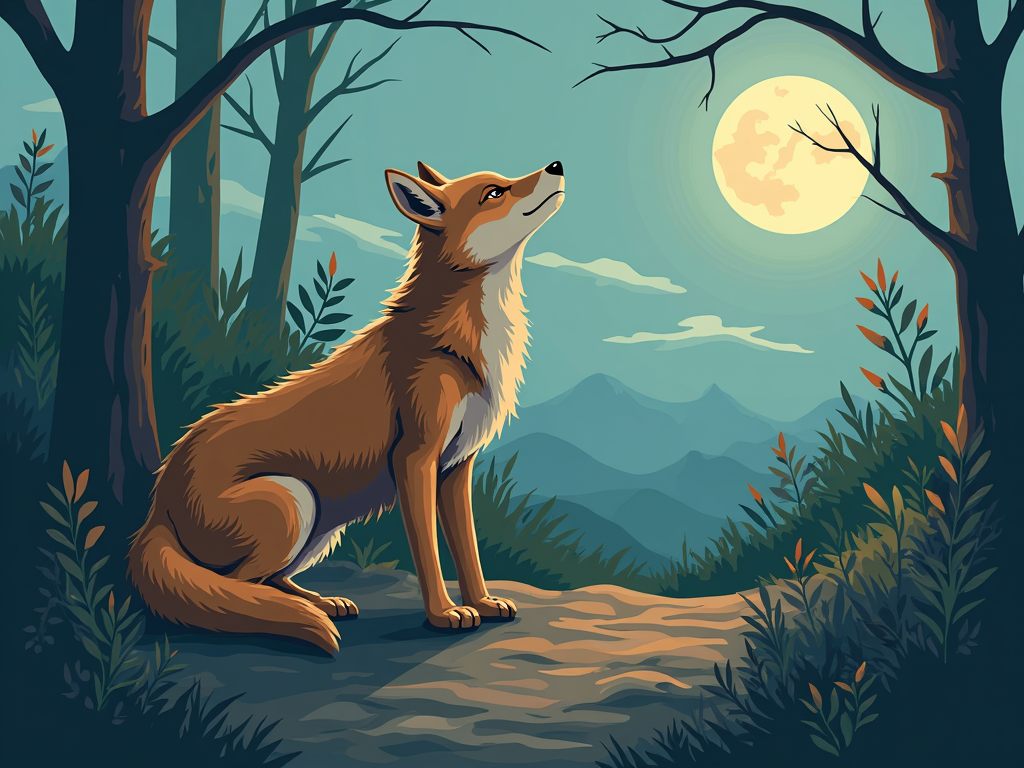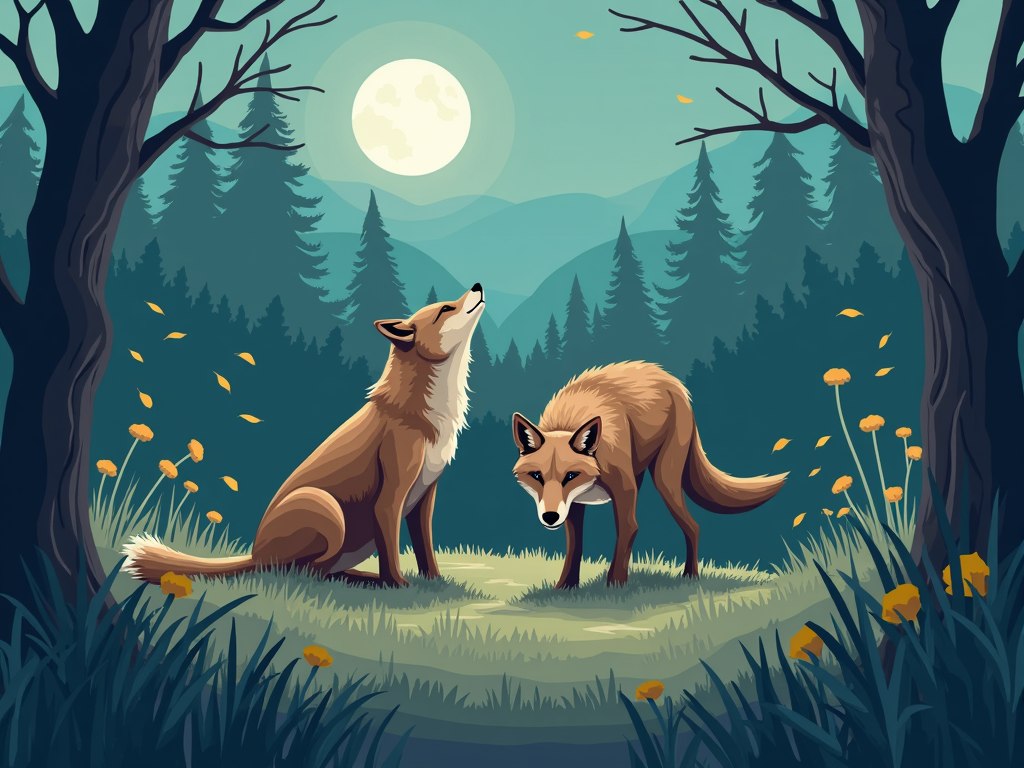Here’s something that’ll mess with your head: that coyote you heard last night in downtown LA? It doesn’t sound like its cousin in Yellowstone anymore.
Scientists just dropped a bombshell—urban coyotes are literally evolving different voices. Not kidding. We’re talking actual genetic changes that are rewriting how these animals communicate.

While everyone’s been arguing about whether that’s a coyote or someone’s German Shepherd, researchers have been tracking something way more interesting. Cities aren’t just changing where coyotes live. They’re changing their DNA, their behavior, and yeah, even their signature howls.
Forget everything you think you know about what a coyote sounds like. The old field guides? They’re practically ancient history. What we’re seeing now is evolution happening in real-time, right in our backyards.
And trust me, once you understand what’s actually going on, you’ll never hear that midnight yipping the same way again.
The Complete Guide to Coyote Vocalizations: From Classic Howls to Urban Variations
Let’s start with the basics before we blow your mind. Traditional coyote sounds include about 11 distinct vocalizations. There’s the classic coyote howl—that long, mournful cry that starts low and rises. The yip-howl combo that sounds like a demented party. Coyote barks that are sharper than any dog’s. Woofs, growls, huffs, and these weird chirping sounds that’ll make you question reality.
But here’s where it gets crazy. Urban coyotes? They’re remixing the whole playlist.
Researchers from the US Fish and Wildlife Service analyzing frequency patterns found that city coyotes use shorter bursts at higher pitches. We’re talking 15-20% higher frequency than their rural relatives. Why? Because cities are loud as hell. Those low-frequency howls that work great in open desert? They get drowned out by traffic.
So urban coyotes adapted. They’re basically shouting over the noise pollution, developing what Wildlife Biology researchers call ‘acoustic adaptation.’
Picture this: a rural coyote’s howl peaks around 500-800 Hz. Urban coyotes? They’re hitting 700-1000 Hz regularly. That’s not just preference—that’s evolution in action.

The really wild part? Baby coyote sounds in cities are different from birth. Pups are born making these higher-pitched sounds. It’s not learned behavior anymore. It’s genetic. Scientists recorded pups in Los Angeles that had never heard rural coyotes, and guess what? They’re already speaking the urban dialect.
Coyote pack sounds have changed too. Rural packs coordinate with long-distance howls. Urban packs? Short, sharp bursts. Like they’re texting instead of calling.
Makes you wonder what they’re actually saying, doesn’t it?
The Science Behind Urban Coyote Evolution: How Cities Are Rewriting Canis latrans DNA
Brace yourself for this one. A groundbreaking 2024 study in Los Angeles just identified specific genes that are mutating in urban coyotes. We’re not talking thousands of years of evolution here. We’re talking changes happening since your parents were kids.
The research team found candidate genes related to diet, health, and Animal Behavior that show significant variations between urban and rural populations. One gene cluster affects how Canis latrans processes carbohydrates. Makes sense when you think about it—urban coyotes eat way more human food waste than their desert cousins hunting rabbits.
Another set of genes? They’re linked to stress response and fear behaviors. Urban coyotes literally have different fear responses coded into their DNA.
But here’s the kicker: movement pattern analysis shows urban coyotes travel 40% less distance daily than rural ones. They’ve become efficient city dwellers, sticking to smaller territories packed with resources. The genetic changes support this lifestyle shift.
Researchers from Wildlife Conservation groups tracked coyotes using GPS collars and found urban animals avoid crossing major roads during peak traffic. Not because they learned it—because the ones who didn’t avoid traffic didn’t survive to pass on their genes. Natural selection on steroids.
The craziest finding? Urban Wildlife studies show these coyotes have genetic markers for enhanced problem-solving abilities. They’re literally evolving to be smarter. One researcher called it ‘the most rapid mammalian evolution we’ve documented in North America.’
These changes affect their Animal Communication too. Coyote mating sounds in cities happen earlier in the year. Coyote distress sounds are shorter, more urgent. Even their hunting calls changed—urban coyotes barely use them anymore.
Think about that next time you see one casually strolling through a parking garage like it owns the place. Because genetically speaking? It kind of does.
Decoding Night Sounds: How to Identify Coyote Sounds vs Dogs, Wolves, and Other Wildlife
Everyone thinks they know what a coyote sounds like until they actually hear one. Then suddenly every dog bark becomes a potential coyote. Let’s clear this up.
First, forget the myth that you only hear coyote noise at night. Urban coyotes are active during dawn and dusk too—what scientists call crepuscular behavior. You might hear coyote call sounds at 6 AM just as easily as midnight.
The dead giveaway? Coyotes never sound like just one animal. Even a lone coyote uses multiple coyote vocalizations in sequence, creating an illusion of a pack. Dogs? They stick to one sound at a time. A coyote might start with a bark, slide into coyote yipping, then finish with a howl—all in about ten seconds.
Here’s the difference between coyote and dog sounds: rhythm. Dogs bark in predictable patterns. Boom, boom, boom. Coyotes? They’re jazz musicians—unpredictable, improvisational.
Coyote vs wolf sounds are easier to distinguish than you’d think. Wolves sound deeper, more resonant. Their howls can last 6-7 seconds. Coyote howls? Usually 3-5 seconds, higher pitched, with that characteristic rise at the end. If you hear something that sounds like a wolf in Chicago, it’s a coyote doing its best wolf impression.
The confusion with dogs happens because coyotes can mimic. Seriously. Urban coyotes have learned to throw in dog-like barks to blend in. But they can’t help adding their signature yips and warbles. It’s like trying to hide an accent—eventually, it slips out.
Red foxes scream like someone being murdered. Raccoons chitter and growl. Owls hoot in consistent patterns. But coyotes? They’re the improvisers of the Canidae Family—never playing the same tune twice.
Once you know the difference, you can’t unhear it. That’s both a blessing and a curse at 3 AM.
Why Do Coyotes Howl? The Urban vs Rural Communication Breakdown
Time to tackle the big question: why do coyotes howl in the first place? The answer’s more complicated than you’d think, especially when you factor in the urban evolution angle.
National Geographic researchers identified primary reasons for coyote howling: territory marking, pack coordination, and mate attraction. But here’s the twist—urban coyotes use these same vocalizations completely differently.
Rural coyotes howl across miles of open terrain. It’s long-distance communication, like smoke signals. Urban coyotes? They’ve adapted to close-quarters living. Their howls are shorter because their territories are smaller. Why shout across the valley when your neighbor’s just three blocks away?
Coyote howling meaning changes with context too. Morning howls typically mean “I’m here, this is mine.” Evening howls often coordinate hunting or gathering. But urban coyotes barely hunt anymore. Their evening howls now mean “meet me at the dumpster behind Whole Foods.”
Predator Calls have practically disappeared from urban coyote vocabulary. Why call for hunting when you’re scavenging? Instead, they’ve developed new vocalizations—researchers recorded sounds that don’t exist in rural populations. Urban-exclusive calls that seem to communicate about human activity patterns.
The social aspect is wild too. Rural coyotes howl to strengthen pack bonds. Urban coyotes? They’re often solo operators or tiny family units. Their howls are less “we are family” and more “stay out of my trash route.”
Yellowstone National Park coyotes still howl the traditional way. Compare their coyote sound audio to LA recordings—it’s like comparing Shakespeare to text messages. Same language, completely different usage.
So What Does a Coyote Sound Like in 2024? The Answer Will Surprise You
Here’s the deal. Those coyotes you’re hearing? They’re not the same animals your grandparents knew. They’re urban-adapted, genetically distinct, vocally evolved creatures that have rewritten the rulebook on wildlife adaptation.
Every howl, yip, and bark is part of a new language being written in real-time by evolution itself. The coyote sounds mp3 files in wildlife databases? Half of them are already outdated.
The next time you hear that eerie chorus at 3 AM, remember—you’re not just hearing an animal. You’re hearing evolution in action. You’re witnessing one of the fastest genetic adaptations ever documented in North American mammals. And yeah, it’s happening right outside your window.
Urban coyote communication sounds are becoming their own dialect. Give it another decade, and city coyotes might not even understand their country cousins anymore. We’re watching the birth of a new subspecies, one howl at a time.
Download a wildlife sound identification app. Spend one evening really listening. Because understanding these sounds isn’t just about satisfying curiosity. It’s about recognizing that we’re living through a massive biological experiment, and we’re all part of it.
The coyotes have already adapted. Question is, have we?